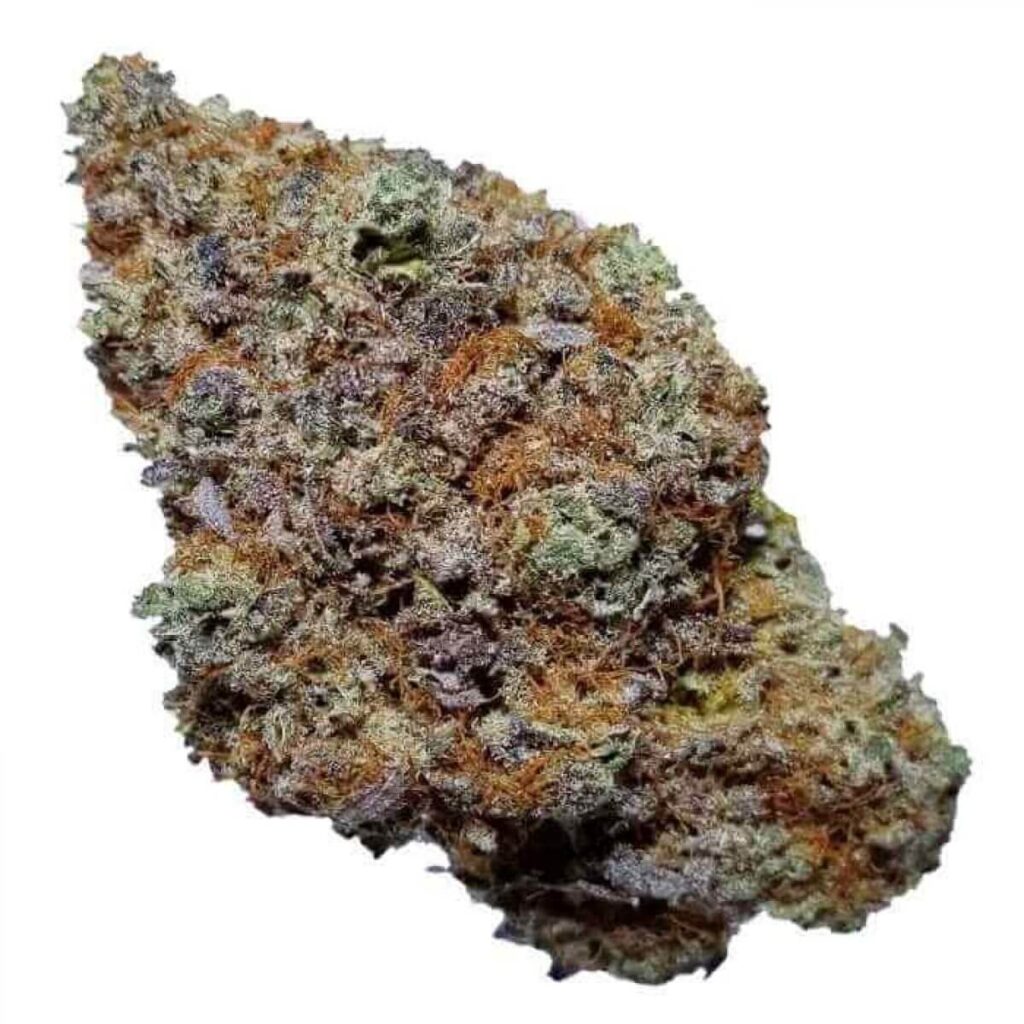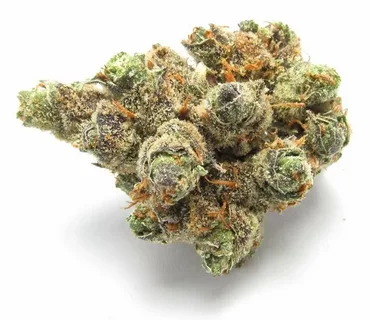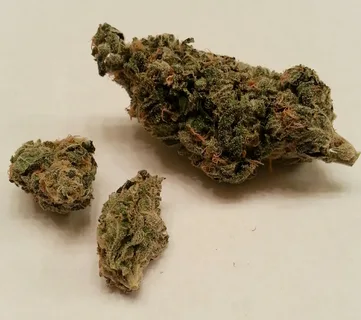Origin and History
Blackberry Weed Strain Origins
The origins of the Blackberry weed strain are shrouded in mystery, but it’s believed to have originated from the cannabis community in the United States.
One theory suggests that the strain was created by crossing a combination of Blueberry and Black Domina strains, which were both popular at the time.
The resulting offspring had the sweet and fruity flavor profile of Blueberry, combined with the dense and indica-dominant characteristics of Black Domina.
This unique combination gave rise to the Blackberry strain, which quickly gained popularity among cannabis enthusiasts for its exceptional taste and potent effects.
Over time, the Blackberry strain has undergone several variations and mutations, resulting in different phenotypes with varying levels of THC and CBD content.
The modern-day version of the Blackberry strain is often characterized by its dark purple coloration, with hints of blue and green undertones.
The buds are typically dense and sticky, with a high concentration of trichomes that give off a sweet and fruity aroma.
When smoked or vaporized, the Blackberry strain produces a relaxing and sedating effect, with a subtle sense of euphoria and happiness.
The effects are often described as “heavy,” making it a popular choice for those seeking relief from pain, anxiety, and insomnia.
The history of the Blackberry strain is closely tied to its origins in the United States, where it quickly gained popularity among cannabis enthusiasts and eventually spread globally.
Today, the Blackberry strain can be found in dispensaries and cannabis stores around the world, with many growers offering their own unique variations and strains.
Despite its widespread availability, the Blackberry strain remains a sought-after choice among cannabis connoisseurs for its exceptional taste, potent effects, and rich history.
The Blackberry weed strain is believed to be a variant of the Blueberry strain, which was first developed in the 1970s by breeder DJ Short at the University of Washington. The exact origins of the Blackberry strain are unclear.
The Blackberry weed strain is believed to be a variant of the Blueberry strain, which was first developed in the 1970s by breeder DJ Short at the University of Washington.
The exact origins of the Blackberry strain are unclear, but it is thought to have emerged from the cross-breeding of Blueberry with another strain, possibly a indica-dominant variety.
One theory suggests that the Blackberry strain was created by crossing Blueberry with a strain known as “Black Cherry”, which was developed in the early 1990s by Canadian breeders.
Another theory suggests that the Blackberry strain is actually a variant of the “Black Diamond” strain, which was developed in the 1990s by California-based breeder DNA Genetics.
The name “Blackberry” likely comes from the strain’s dark purple color and its sweet, berry-like flavor profile, which is similar to that of the Blueberry strain but with a more intense and earthy undertone.
In terms of its genetic makeup, the Blackberry strain is believed to be a hybrid of 70-80% indica and 20-30% sativa, making it a heavy indica-dominant variety with a strong sedative effect.
Blackberry is often used to treat chronic pain, insomnia, anxiety, and depression, and its high THC content (up to 22%) makes it a popular choice among recreational users looking for a potent and relaxing experience.
Overall, while the exact origins of the Blackberry strain are unclear, it is clear that this strain has a rich history and a loyal following among cannabis enthusiasts.
Genetic Makeup
The origins of Blackberry, a popular indica-dominant cannabis strain, are shrouded in mystery, but its rich history and genetic makeup have contributed to its widespread popularity.
The exact origin of Blackberry is unclear, but it is believed to be a descendant of the legendary Granddaddy Purple strain, which was first cultivated in the 1990s by a breeder known as Ken Estes.
Blackberry was created by crossing Granddaddy Purple with a mysterious unknown strain, possibly a Northern Lights or a Blueberry variety.
The resulting phenotype exhibited the characteristic deep purple coloration of its parent strain, along with a robust and resinous growth pattern that became synonymous with quality cannabis.
Genetically speaking, Blackberry is a complex hybrid that boasts an impressive lineage of indica-dominant genetics from its parent strains.
Its genetic makeup includes a combination of 60-40% indica to sativa, making it well-suited for relaxing and sedative purposes.
The strain’s terpene profile is dominated by the presence of myrcene, pinene, limonene, and linalool, which contribute to its unique aroma and flavor profiles.
Blackberry’s buds are known for their dense, dark purple coloration and the presence of vibrant orange hairs throughout the trichomes.
The strain’s flavor profile is often described as sweet and fruity, with hints of berry and earthy undertones.
Cannabis connoisseurs praise Blackberry for its potent relaxing effects, which are said to melt away stress and anxiety while inducing a deep sense of relaxation and calmness.
Blackberry’s high is often described as slow-building, allowing users to gradually relax into its sedative effects without feeling overwhelmed or disoriented.
The strain’s therapeutic potential extends beyond its relaxing properties, with many users reporting relief from chronic pain and inflammation through regular use of Blackberry.
Overall, the genetic makeup and history of Blackberry have cemented its reputation as a premier indica-dominant cannabis strain that is sought after by both recreational and medicinal users alike.
The Blackberry strain is thought to have been created by crossing the Blueberry strain with other unknown strains.
The Blackberry weed strain, also known as Blackberry Kush, has a rich and intriguing history that dates back to its origins in the cannabis industry.
While the exact date of its creation remains unknown, it is thought to have been developed by crossing the Blueberry strain with other unknown strains, which suggests a deliberate effort to create a new and potent hybrid.
The Blueberry strain itself has an equally fascinating history, having originated in the 1970s from a Canadian breeder who crossed Purple Thai with Afghani.
This early experiment gave rise to a strain that became synonymous with sweet and tangy flavors, making it a favorite among cannabis enthusiasts worldwide.
Given the lineage of Blackberry Kush, it is not surprising that this strain inherits the robust characteristics of its Blueberry parentage.
The effects of smoking or consuming Blackberry Weed are often reported to be intense but balanced, with users describing euphoric highs accompanied by a clear and focused mental state.
This strain’s potency has led many breeders to experiment with crossbreeding it with other varieties in an attempt to unlock new flavor profiles and intensified effects.
Today, Blackberry Kush is recognized as one of the premier cannabis strains available to medical and recreational users alike.
Effects and Properties
Cannabinoid Profile
The effects of the Blackberry weed strain can be described as relaxing and euphoric, making it a great choice for those looking to unwind after a long day.
Some common effects reported by users include:
- Euphoria: Users have reported feeling extremely happy and uplifted when consuming this strain.
- Relaxation: Blackberry is known to be a sedating strain, helping users to relax and unwind.
- Anxiety reduction: This strain has been shown to reduce anxiety in many users, making it a great choice for those who suffer from anxiety.
- Increased appetite: Some users have reported an increase in appetite after consuming Blackberry.
The properties of this strain are also notable, as it:
- Has high THC levels: With THC levels ranging from 18-22%, Blackberry is a potent strain that packs a punch.
- Contains minor cannabinoids: In addition to its high THC levels, Blackberry contains smaller amounts of other cannabinoids such as CBD and CBC.
The cannabinoid profile of the Blackberry strain can be broken down into:
- THC (Tetrahydrocannabinol): The primary psychoactive compound in cannabis, responsible for the “high” effect.
- CBD (Cannabidiol): A non-psychoactive compound with potential therapeutic benefits, including pain relief and anxiety reduction.
- CBC (Cannabichromene): A lesser-known cannabinoid that has been shown to have anti-inflammatory properties.
Overall, the Blackberry strain is a unique and potent blend of effects and cannabinoids, making it a popular choice among medical marijuana patients and cannabis enthusiasts alike.
The Blackberry strain has a high THC content, typically between 1822%, making it suitable for medical and recreational use. It also contains lower levels of CBD and terpenes.
The effects of The Blackberry strain are primarily associated with its high THC content, which can range from 18-22%. This level of THC makes it suitable for both medical and recreational use.
The THC in the Blackberry strain is known to induce feelings of euphoria, relaxation, and heightened sensory perception. Users may experience increased creativity, improved mood, and enhanced appetite.
However, the effects can also include potential negative side effects such as anxiety, paranoia, and dizziness, especially at higher doses or for novice users. The intensity and duration of these effects may vary depending on individual tolerance and method of consumption.
The CBD levels in the Blackberry strain are generally lower compared to other strains. While CBD is known for its therapeutic benefits, such as pain relief and anti-inflammation, the relatively low levels in the Blackberry may limit its effectiveness for these purposes.
Terpenes, another key component of cannabis, are also present in smaller quantities in the Blackberry strain. Terpenes contribute to the aroma and flavor of the plant, as well as potential therapeutic effects such as stress relief and sleep aid. The lack of terpenes in this strain may result in a less complex flavor profile and reduced therapeutic benefits.
In summary, while the Blackberry strain has potential benefits for medical and recreational use, its properties and effects should be carefully considered. Users are advised to consult with a medical professional before consumption, especially if they have concerns about THC tolerance or CBD requirements.
Terpene Profile
The terpene profile of a cannabis strain refers to the unique combination and concentration of various terpenes present in the plant’s essential oils.
Terpens are organic compounds produced by plants, including cannabis, as a natural defense mechanism against pests, diseases, and environmental stresses.
Each terpene possesses distinct properties, such as flavor, aroma, and medicinal effects, that contribute to the overall character of the strain.
The most common terpenes found in cannabis include:
- Limonene: citrusy scent, uplifting mood
- The terpene profile of Blackberry Weed Strain is characterized by a predominantly indica-dominant genetic makeup.
- Blackberry strain exhibits a terpene profile rich in myrcene (25-30%), with moderate amounts of caryophyllene and limonene.
- This combination imparts an earthy, musky aroma to the strain, often described as sweet and fruity, reminiscent of ripe blackberries.
- The medicinal effects of Blackberry Weed Strain are largely attributed to its myrcene content.
- Myrcene has been shown to have anti-inflammatory properties, which can help alleviate pain and reduce inflammation in various medical conditions, such as arthritis or multiple sclerosis.
- The sedative effects of Blackberry Weed Strain make it an ideal choice for patients seeking relief from anxiety, stress, or insomnia.
- However, users should be aware that myrcene’s effects can also cause drowsiness and lethargy in some individuals, particularly when consumed in high amounts.
- The terpene profile of Blackberry Weed Strain may vary depending on factors such as cultivation methods, climate, and genetics.
- Therefore, users should always consult with a healthcare professional before consuming cannabis products, especially if they have pre-existing medical conditions or are taking prescription medications.
Blackberry is characterized by its earthy, sweet aroma with hints of berry and citrus notes.
The aroma of Blackberry weed strain is one of its most distinctive features, with a rich and earthy scent that is reminiscent of forest floors and woodland berries.
The sweet notes in the aroma are due to the presence of terpenes such as myrcene, which is a common compound found in many strains of cannabis, but particularly prevalent in Blackberry.
When broken down further, the aroma also contains hints of berry and citrus notes, with some users describing it as having undertones of black cherry or other dark fruits.
The earthy undertones are thought to be due to the presence of humulene, a terpene that is known for its ability to give cannabis its characteristic woody or herbal scent.
The combination of these different terpenes and flavor compounds creates an aroma that is both unique and inviting, making Blackberry weed strain a popular choice among users who appreciate complex and nuanced flavors.
- Frosty Aka Frosty OG Weed Strain Information - September 12, 2024
- Dark Star Aka Darkstar Weed Strain Information - September 9, 2024
- Cannalope Haze Aka Cantaloupe Haze, Cannalope Haze Premium Weed Strain Information - September 6, 2024









